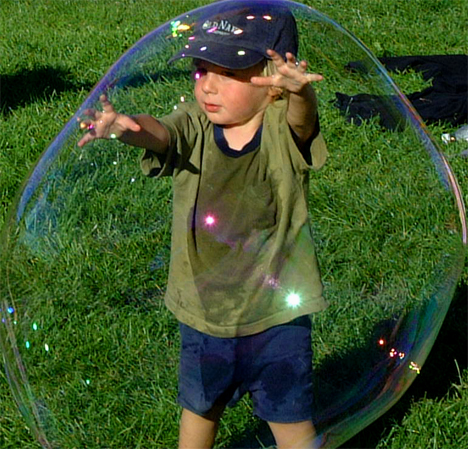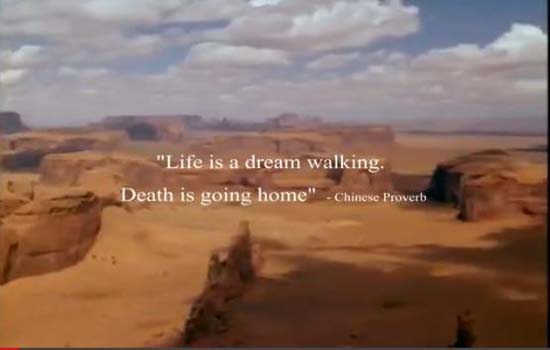What Really Matters?
This song is one of my favorites from Larnelle Harris – it’s called In a Way that Matters. It’s just a great song (and a prayer) about wanting to have a meaningful life.
https://youtu.be/yMe53kXUNfU
Do we live Life in a bubble?
Do you have family or friends that don’t believe in God who are scientifically minded & who consider talk about God a waste of time? I have a short story about how an idea about a bubble can help you to talk to your relatives about the existence of God. Keep in mind that it’s not necessarily our job as Christians to fully convince the people we witness to that God exists. It’s our job to introduce the subject to them; to simply open a door and then the Holy Spirit will do the rest of the work.
Let me explain….if you think about it, we live in a sort of bubble. We experience the world via our senses. Our eyes, ears and other senses are magnificent in structure & design and help us to understand the universe and its intricacies. Our ears can hear so many things – a lover’s whisper, a bird’s song, a screaming baby and a symphony. However, as incredible as our senses are, we can’t hear even half of what a dog can hear. A dog’s sense of hearing is 100 times more sensitive than ours and they can hear all sorts of frequencies and tones that we can only confirm exist by using sophisticated electrical equipment. That equipment shows us that just because we can’t hear those things doesn’t mean they don’t exist. We can’t hear those frequencies, but they are there just the same. In the same way we have to admit that there might be other things out there in the world that exist that just cannot be sensed by our limited senses. Just because we can’t hear the things the dog hears, doesn’t mean they don’t exist and just because we can’t see heaven or God doesn’t mean they don’t exist either.
For my argument to be just and honorable, I have to admit that it doesn’t prove there is a God. But what it does do is that it opens the possibility of a God. It opens a crack in a door that lets in the POSSIBILITY THAT SOMETHING ELSE EXISTS. That opening is then the crack through which the Holy Spirit will enter and do his work and sometimes a crack in a door is all it takes.
Vaccine Concerns
Should we have asked questions about COVID-19 Vaccination?
I told my friends, family & acquaintances about 100 times each that they should get the C0vid Vaccine if they feel comfortable with it. However, I had also asked questions about the vaccine and been censured, ridiculed, and treated like an insane person just because I asked a question or two. You have to admit that asking questions, due to the growing number of post-vaccine reports, shouldn’t be a reason for a person to be locked up and have the key thrown away, should it? I really just want to feel good about it (for myself and my loved ones) and not have to worry about the chemicals I’m putting into my body. I really think that there’s nothing wrong with asking a few questions about it and that it would be way more worrisome if a person just blindly accepted the vaccine without even asking anything about it. So I’ve compiled a few articles from a large variety of authors that represent a number of different perspectives (including Conservatives & Liberals, Allopathic and Homeopathic/Naturopathic physicians, Americans, and Europeans, etc.). AGAIN I have no idea how many times I have to say this or have said this but I am not saying you should or shouldn’t have gotten the COVID vaccines – I am just saying please stop shoving pre-approved data from the CDC and NIH down our throats and let us hear and read about a few other perspectives. If your vaccine was so safe then why wouldn’t you have wanted us to read any other perspectives? That is what started the COVID hesitancy in the first place.
(Article 3 is nice to know after being ridiculed for even SUGGESTING it might help during the height of the pandemic).
Life after death or just wishful thinking?
There has been an ongoing debate between the scientific & spiritual worlds about when life ends and if there is an afterlife or not. Scientists of all types often explain what’s happening to people who report they’ve experienced an NDE (or Near Death Experience) by saying it’s a “temporal lobe seizure” or the brains desperate last attempt to hang on to life which results in elaborate hallucinations of the after life. But to those who have had an NDE, who are frequently able to describe events that occurred AFTER they were pronounced dead, claim that life after death is real and more real than life on earth. Listen to what a few of these people say about what has happened to them and think about it.
https://youtu.be/Zrx8C2lxhJI




Recent Comments